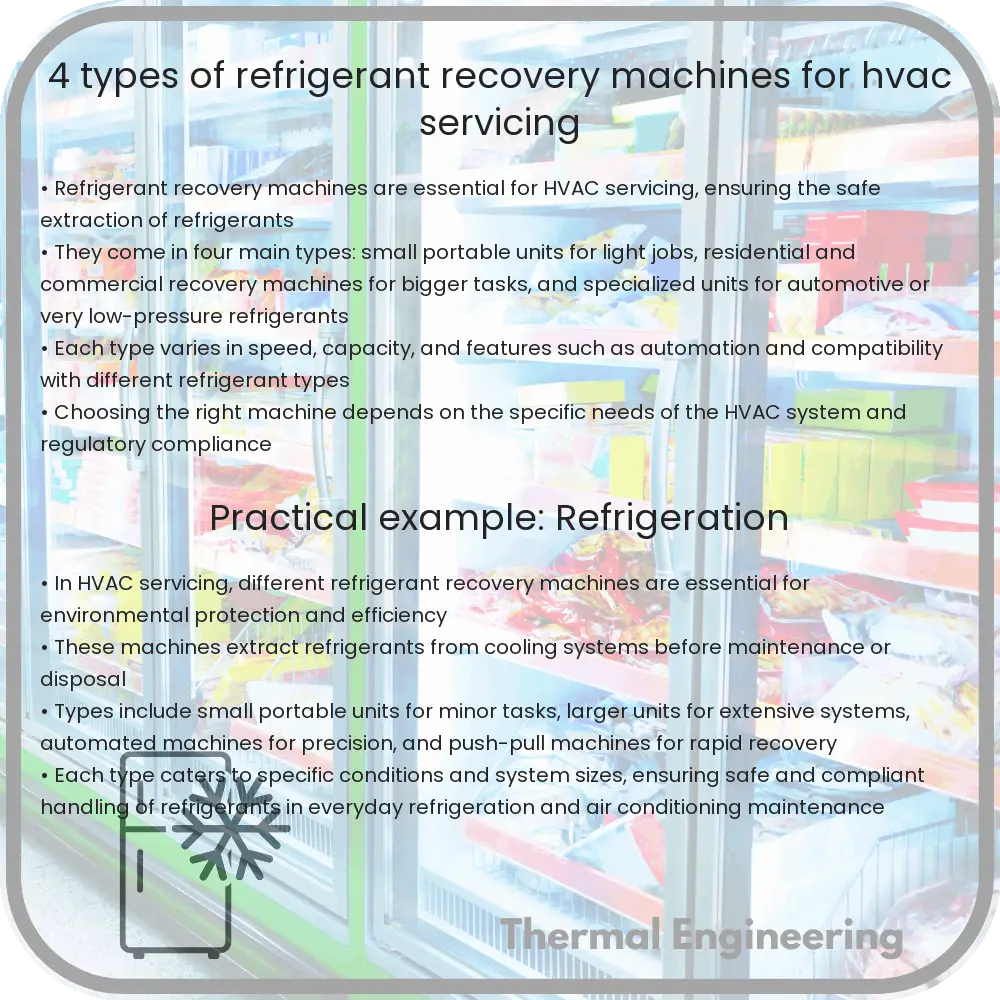Essential guide to selecting the right refrigerant recovery machine for efficient and compliant HVAC servicing.

Understanding Refrigerant Recovery Machines for HVAC Servicing
Refrigerant recovery machines play a crucial role in the servicing of heating, ventilation, and air conditioning (HVAC) systems, ensuring that refrigerants are safely extracted to prevent environmental pollution and facilitate system repair or maintenance. With various technologies available, selecting an appropriate refrigerant recovery machine is essential for service efficiency and compliance with environmental laws. Here, we explore four common types of refrigerant recovery machines used in HVAC servicing.
1. Small Portable Recovery Machines
Small portable recovery machines are designed specifically for light-duty jobs and residential applications. These compact units are ideal for scenarios where mobility and space are key considerations, such as in household HVAC systems or small commercial spaces. Despite their smaller size, these machines are typically equipped with features like:
- High-efficiency cross flow design, ensuring rapid recovery rates.
- Oil-less compressors, which reduce maintenance needs and avoid contamination of the refrigerant.
- User-friendly operation interfaces that make them accessible even for novices in the field.
2. Commercial Grade Recovery Machines
Commercial grade recovery machines are robust and suited for more demanding applications, including large residential systems or commercial buildings. These machines are built to handle various types of refrigerants and provide faster recovery rates to accommodate larger systems. Key features often include:
- Two-cylinder or even twin-cylinder compressors for improved performance and durability.
- Integrated manifold gauges to monitor pressure levels without additional equipment.
- Automatic shut-off capabilities when a particular vacuum level is achieved, safeguarding both the machine and the HVAC system.
3. Push-Pull Recovery Machines
Push-pull recovery is suitable for very large systems where traditional recovery methods can be too time-consuming. This method involves setting up a closed loop in which the refrigerant is “pushed” by pressure from the recovery machine and “pulled” by the vacuum inside a recovery cylinder. This approach is generally used for initial recovery of liquid refrigerant and is followed by other methods to recover remaining vapors. Advantages include:
- Significantly faster recovery of large amounts of refrigerant.
- Higher efficiency when dealing with large-charged systems.
- Reduction in recovery job time by as much as 80% compared to conventional methods.
4. Hybrid Recovery Machines
Hybrid recovery machines combine various features and technologies to offer flexible solutions that can adapt to both small and large scale jobs. These versatile machines incorporate the capability to switch between liquid and vapor recovery and often include advanced features such as:
- Self-clearing functions to avoid cross-contamination of different refrigerants.
- Automatic recovery, vacuum, and recharge capabilities.
- Programmable features to handle multiple refrigerants with hybrid systems.
These machines cater to a wide array of HVAC maintenance scenarios, making them a popular choice among professionals who require a broad range of functionalities.
In conclusion, the decision on which type of refrigerant recovery machine to use depends largely on the specific needs of the HVAC system involved and the conditions under which the recovery will be performed. Understanding the various types and their capabilities allows HVAC technicians to efficiently and safely manage refrigerants, contributing to environmental protection and system longevity.